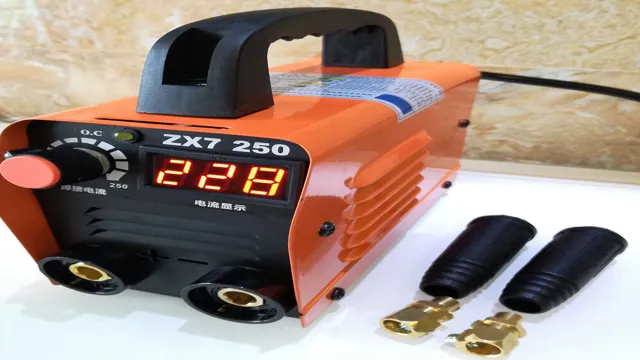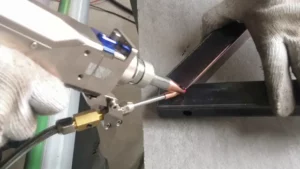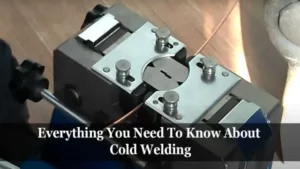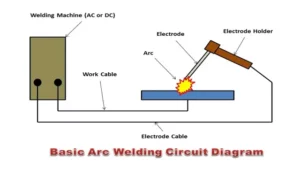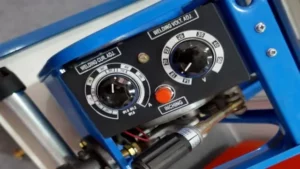Are you looking to learn how to use an IGBT welding machine? This advanced technology has revolutionized the welding industry, allowing for faster and more efficient operations. However, it may seem intimidating to those unfamiliar with it. But fear not! In this blog post, we will take you through the steps of how to use an IGBT welding machine, including its features and the benefits it can offer.
So, grab your helmet and let’s dive in!
Introduction
If you’re looking to take up welding as a hobby or profession, one critical aspect to consider is which welding machine to use. In recent years, IGBT welding machines have grown in popularity due to their compact size, low power consumption, and improved efficiency in comparison to traditional welding machines. But how do you use an IGBT welding machine? Firstly, it’s essential to understand that an IGBT (Insulated Gate Bipolar Transistor) is a semiconductor device used in electronic switches and amplifiers.
To use an IGBT welding machine, you need to connect it to a power source, then add your chosen electrode to the welding machine’s electrode holder. Next, adjust the current output and voltage settings to match your application. Lastly, position the electrode where you want the weld to take place and trigger the welding machine.
As with any welding procedure, it’s critical to adhere to all safety precautions to avoid any accidents. By following these steps, you can use an IGBT welding machine safely and efficiently while creating quality welds.
What is an IGBT Welding Machine
An IGBT welding machine is a type of welding equipment that utilizes insulated gate bipolar transistors (IGBTs) as its power semiconductor device. IGBTs are known for their high efficiency, low power consumption, and fast switching speeds, making them ideal for welding applications. Unlike traditional welding machines that use transformers to convert high voltage and low current to low voltage and high current, IGBT welding machines use electronic circuits to regulate current and voltage, resulting in a more efficient and precise welding process.
With its advanced technology, IGBT welding machines are becoming increasingly popular in the welding industry, offering welders faster welding speeds, better control over the welding process, and improved weld quality.

Advantages of using an IGBT Welding Machine
An IGBT welding machine is considered one of the most beneficial technologies in the world of welding. IGBT stands for Insulated Gate Bipolar Transistor, and this technology is preferred in welding operations worldwide. One of the significant advantages of using an IGBT welding machine is its efficiency.
These machines have high-speed switching capabilities, allowing for faster and more precise welding, making them perfect for welding thin and delicate materials. Additionally, IGBT welding machines produce less heat, which means that they can be used for more extended periods without overheating, making them a reliable option for heavy-duty work. Their lightweight and compact design make them easy to move and store, and they also consume less power than traditional machines.
With these advantages, it is no wonder that many welders are switching to IGBT welding machines in their welding operations.
Preparing to Use an IGBT Welding Machine
If you’re planning to use an IGBT welding machine, there are a few steps you should take before getting started. The first step is to make sure you have all the necessary safety gear, including welding gloves, a helmet, and protective clothing. Once you have your gear, it’s time to prep your welding area.
Make sure the area is well-ventilated and free of flammable materials. You’ll also want to clean the surfaces you’ll be welding to ensure the best possible weld. Next, you’ll want to set up your welding machine.
This can vary depending on the specific machine you have, but you’ll typically need to connect it to a power source and set your preferred welding settings. Finally, make sure you have a good understanding of welding techniques and safety practices before starting. With the right preparation and knowledge, using an IGBT welding machine can be a safe and effective way to weld a wide range of materials.
Safety Precautions
When it comes to using an IGBT welding machine, there are some important safety precautions you need to take. Before you start welding, make sure you’re wearing the appropriate protective gear, including gloves, eye protection, and a welding mask. It’s also essential to ensure that your welding area is well-ventilated to prevent fumes from accumulating.
You should also inspect your welding machine before use, checking for any visible damage or issues. If you notice any problems, do not use the machine and have it repaired or replaced. And when using an IGBT welding machine, always follow the manufacturer’s instructions for safe usage to avoid any accidents or injuries.
Another important safety tip is to never touch or overlap the welding wires during use, as this can cause an electrical shock. Keep your welding area clear of any flammable materials and always have a fire extinguisher nearby in case of emergencies. By taking these safety precautions, you can ensure a safe and successful welding experience with your IGBT welding machine.
Just remember to be attentive, cautious, and follow all necessary safety guidelines to prevent any mishaps or accidents.
Setting Up the Machine
An IGBT welding machine is a powerful tool that can help you weld metal with ease. Before you can begin using one, however, you need to prepare it properly. The first step is to ensure that the machine is on a flat, level surface and that all of its components are securely fastened.
You should also check to make sure that the power source is properly connected and that the machine has been properly grounded. Once these basic steps have been taken care of, you can begin setting up the welding machine itself. This typically involves adjusting the welding parameters, such as the amperage and voltage, to suit your specific welding needs.
You may also need to attach the welding torch and wire feeder, depending on the type of machine you are using. Overall, preparing to use an IGBT welding machine requires a bit of time and effort, but with the right approach, you can ensure that your machine is ready to perform at its best.
Using an IGBT Welding Machine
Do you want to learn how to use an IGBT welding machine? First, make sure you have the correct safety gear, including helmets, gloves, and protective clothing. Next, ensure that the machine is properly grounded and follow the manufacturer’s set-up instructions. After that, set the welding parameters according to your project’s requirements, including the current, voltage, and wire speed.
Once you have adjusted the settings, plug in the welding machine and begin welding, making sure to regularly check and adjust the settings as needed. Lastly, when finished, make sure to properly cool and store the machine. By following these steps, you can successfully and safely use an IGBT welding machine for your welding projects.
Choosing the Correct Electrode
When it comes to welding with an IGBT welding machine, choosing the correct electrode is crucial to achieving a strong and durable weld. There are a variety of electrode types to choose from, including E6010, E6011, E7018, and more. Each electrode has its own unique characteristics and is best suited for specific applications.
For example, E7018 is an ideal choice for welding thicker metals and provides excellent weld quality, while E6011 is better suited for thinner materials and delivers a deep penetration. Additionally, it’s important to pay attention to the coating on the electrode, as it can impact the welding process and the quality of the final weld. By selecting the right electrode for the job, welders can ensure a successful weld and achieve optimal results.
Setting the Proper Amperage
When it comes to welding, setting the proper amperage is crucial for a successful and safe weld. An IGBT welding machine can help make this process easier for welders. IGBT (Insulated Gate Bipolar Transistor) machines offer precise control over amperage levels, allowing welders to achieve consistent results.
With an IGBT machine, you can easily adjust the amperage to suit the thickness of the material you’re welding. It’s important to note that a lower amperage setting should be used for thinner metals to prevent burn-through, while a higher amperage setting is necessary for thicker materials to ensure proper penetration. Ultimately, using an IGBT welding machine can streamline the welding process and help produce high-quality welds.
Starting the Arc
When starting the arc with your welding machine, using an IGBT model can make all the difference. IGBT welding machines offer advanced control over the welding process, allowing for greater precision and better results. To start the arc, you’ll first need to prepare your workpiece and position your electrode.
Once you’re ready, simply strike the electrode against the workpiece to create a spark and ignite the arc. From there, you can begin your welding with confidence, knowing that the IGBT machine will help you maintain the optimal level of current and voltage for your specific application. Whether you’re working on a complex project or just getting started with welding, using an IGBT welding machine can provide a more effective and efficient experience, helping you achieve your goals quickly and easily.
Welding Techniques
If you’re planning to use an IGBT welding machine, it’s essential to know the proper methods to ensure that you’ll get the best results. One essential technique to keep in mind is the correct choice of welding current and voltage settings. Finding the right combination can make a significant difference in the quality of your weld.
Also, it’s essential to consider the thickness of the material you’re welding. Make sure you adjust your settings accordingly to ensure that you don’t end up with any brittle spots or deformations in your workpiece. Another vital aspect is the preparation of your materials before welding.
Clean and dry surfaces are critical for removing any contaminants that can cause defects in your weld. Lastly, take the time to practice your welding technique before going on an actual project. It’s essential to have excellent control over the weld pool and torch angle to get a consistent and quality finish.
So, if you want to achieve a high-quality weld using an IGBT welding machine, remember these critical techniques to help you get started.
Troubleshooting
If you’re new to welding and wondering how to use an IGBT welding machine, don’t worry. With a few basic steps, you’ll be able to get started in no time. First, make sure you have the right safety gear, including protective glasses, gloves, and a welding helmet.
Next, familiarize yourself with the controls on the machine, including the amperage and voltage settings. Once you’re ready to start welding, position your workpiece so that it’s stable and secure. Then, turn on the machine and adjust the settings as needed for the type and thickness of metal you’re working with.
Finally, strike an arc and begin welding, keeping a steady hand and moving the electrode in a straight line. With practice, you’ll be able to create strong, clean welds with your IGBT welding machine.
Common Issues and Solutions
Troubleshooting is an important aspect of solving common issues that arise in any system. Often when something goes wrong, it can be a frustrating experience. However, it’s important to approach any problem with a calm and logical mindset.
The first step is to identify the issue and gather as much information as possible about the problem. Once you have identified the issue, you can start troubleshooting. The most common tools for troubleshooting are documentation, support forums, and help guides.
Another solution is to reach out to support directly. They can provide step-by-step instructions, suggestions, and even remotely connect to your system to fix the problem. Remember, troubleshooting takes time and effort, but by following these steps, you can work towards a resolution.
Conclusion
In conclusion, using an IGBT welding machine is not rocket science, but it does require know-how to get the job done. Think of it as a dance between the machine, the metal, and the welder – a synchronized, graceful movement that requires an understanding of each other’s rhythm and flow. With the right settings, adequate safety measures, and a steady hand, you can create beautiful, sturdy welds that will stand the test of time.
So go ahead and put on your dancing shoes, the IGBT welding machine is waiting for you!”
FAQs
What is an IGBT welding machine?
An IGBT welding machine is a type of welding machine that uses insulated gate bipolar transistors (IGBTs) to control the output current.
What advantages does an IGBT welding machine offer over other types of welding machines?
IGBT welding machines offer several advantages, including higher efficiency, better control over output current, and improved reliability.
How do I set up an IGBT welding machine?
To set up an IGBT welding machine, you need to connect the welding machine to a power source, attach the welding electrode, and adjust the output current and voltage settings.
Can I use an IGBT welding machine for both MIG and TIG welding?
Yes, IGBT welding machines can be used for both MIG and TIG welding by simply changing the torch and electrode.
What safety precautions do I need to follow when using an IGBT welding machine?
When using an IGBT welding machine, it is important to wear protective gear, such as welding gloves and a welding helmet, and to ensure that the work area is well-ventilated to prevent the inhalation of fumes.
How do I troubleshoot common problems with an IGBT welding machine?
Common problems with an IGBT welding machine include overheating, poor weld quality, and issues with the output current. To troubleshoot these problems, you should consult the user manual or contact the manufacturer for support.
What maintenance is required for an IGBT welding machine?
Regular maintenance of an IGBT welding machine includes cleaning the machine, checking the electrode and torch, and inspecting the power source and wiring for any damage.
